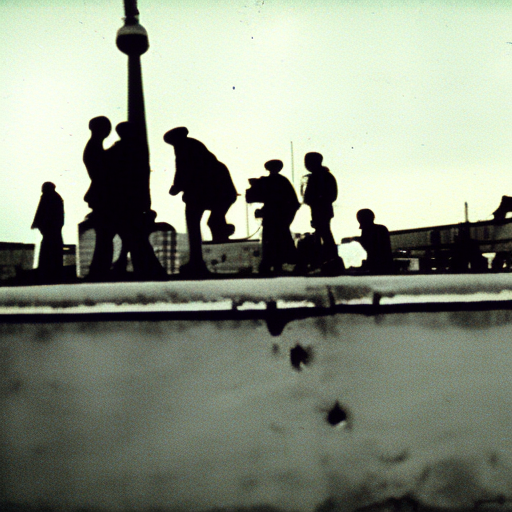Berlin Blockade: The Soviet Union’s Attempt to Isolate West Berlin
The Berlin Blockade was a major event during the early years of the Cold War. It occurred from June 1948 to May 1949 when the Soviet Union, under the leadership of Joseph Stalin, attempted to isolate West Berlin, which was controlled by the United States, Great Britain, and France. The blockade was a response to the introduction of a new currency, the Deutsche Mark, in West Germany, which the Soviets saw as a threat to their influence in the region.
The Background: Germany’s Division and the Creation of West Berlin
After World War II, Germany was divided into four zones of occupation, each controlled by one of the Allied powers: the United States, Great Britain, France, and the Soviet Union. The capital city of Berlin, located in the Soviet zone, was also divided into four sectors. In 1948, the three Western powers decided to merge their zones and introduce a new currency to stabilize the economy. This move was seen as a threat by the Soviet Union, who feared the consolidation of Western influence in Germany.
The Blockade: Cutting Off West Berlin
In response to the introduction of the Deutsche Mark, the Soviet Union implemented the Berlin Blockade. They cut off all land and water access to West Berlin, effectively isolating the city from the outside world. The Soviets hoped that by imposing this blockade, they could force the Western powers to abandon West Berlin or give in to their demands.
The Berlin Airlift: A Lifeline for West Berlin
The Western powers, determined to maintain their presence in West Berlin, launched the Berlin Airlift in response to the blockade. Over the course of the next eleven months, they flew in supplies, including food, fuel, and other necessities, to the people of West Berlin. The airlift was a massive logistical operation, involving hundreds of planes and thousands of flights. It was a remarkable display of determination and solidarity by the Western powers.
The End of the Blockade: Soviet Retreat
The Berlin Blockade came to an end in May 1949 when the Soviet Union finally lifted the blockade. The decision to end the blockade was likely influenced by several factors, including the success of the Berlin Airlift in sustaining the population of West Berlin and the growing international pressure on the Soviet Union to resolve the crisis peacefully. The lifting of the blockade was a significant victory for the Western powers and a clear demonstration of their commitment to defending West Berlin.
The Significance: Cold War Tensions and the Division of Germany
The Berlin Blockade and the subsequent Berlin Airlift were important events in the early years of the Cold War. They highlighted the growing tensions between the Soviet Union and the Western powers and the division of Germany into two separate entities: the Federal Republic of Germany (West Germany) and the German Democratic Republic (East Germany). The blockade also solidified the division of Berlin into East and West, setting the stage for further conflicts and the construction of the Berlin Wall in 1961.
In conclusion, the Berlin Blockade was a significant event during the early years of the Cold War. The Soviet Union’s attempt to isolate West Berlin through the blockade was met with the determined response of the Western powers, who launched the Berlin Airlift to sustain the population of the city. The lifting of the blockade marked a victory for the Western powers and further deepened the division between East and West Germany. The Berlin Blockade and the subsequent events surrounding it played a crucial role in shaping the geopolitical landscape of post-World War II Europe.












